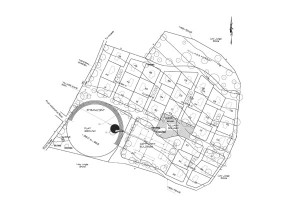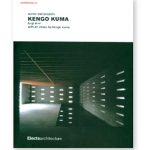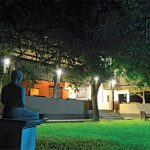-
Building Communities
January 2011
Changing economies, political turmoil, natural disasters and other catastrophes call for re-building communities to help the displaced population. Community development is a process that helps a community to strengthen itself and develop towards its full potential. Spirit of community is ‘more shared and less owned’. A community is held together by common objectives, interests and goals. Communities are formed in the process of satisfying fundamental needs of housing, livelihood, security, health and sanitation.
By Archt Chiranji Abeywickrama
Following the destruction of the Tsunami in 2004, certain coastal populations of the island were relocated through community housing programmes. Successful efforts in rehabilitation have flourished into full blown communities as observed today but many have failed. What may be the cause of such failures and what determines the success of a few?
Each community is built on different virtues, social concerns and networking. In re-building communities the planners should respect these values in demarcating the boundaries for the development. The members of a community can contribute significantly towards its development. Their involvement from inception plays a major role in serving their needs better. It is the responsibility of the planner/ architect to try and preserve the existing values in a community and strengthen the inter-communal network. They play an increasingly demanding role in community development. It is vital that they posses the skills in social aspects to create architecture rooted in the society which in turn will serve the end-user better. The planner must rise to the challenge of motivating the community to actively participate in the process of development and to minimize the environmental impacts of construction.

Archt. Amila De Mel in an effort to house fifty five families in Kudawella, Tangalle has exercised measures to preserve the Kudawella lagoon. Bio cells were used in place of conventional septic tanks to prevent sewage from polluting the lagoon. Despite the requirement for regular maintenance of a bio cell, she has consciously motivated the community towards this environmental sensitive measure. The architect had further succeeded in catering to the needs of the differently abled members of the community. They are provided with unhindered mobility within the dwelling unit as well as to the super market and other amenities enjoyed by any other member of the community. Members of the community were involved in the project from the initial stages and their participation has contributed to the shaping of a satisfactory housing project.
Community bonds can be strengthened by simple planning interventions which satisfy the basic needs of a community.
The input of the professional is not limited to the understanding of the community and environmental aspects. The planner provides the project with a futuristic vision and he/she is able to guide the community to use the available resources to its best advantage.
In the perspective of a project management professional it was revealed that community bonds can be strengthened by simple planning interventions which satisfy the basic needs of a community. Decent affordable accommodation and appealing neighbourhoods have generated sustainable communities. A simple abode with a verandah and eaves to give protection from the elements is the basis of a socio-spatial entity that forms large communities. The design approach should not be an attempt to project the ego of the designer or become restricted to financial benefits.
Common facilities such as community centres, play grounds are an essential component in community housing. These multi functional spaces compensates for the lack of gathering space for funerals and festivity alike. Pre-schools, medical facilities, libraries and such contribute to the spirit of communal living. Yodakandyia village outside the town of Tissamaharama caters to 218 families. The attractive community centre, pre-school, library, medical centre, cricket pitch and volley ball court are increasingly used and appreciated by its population. The planners have also considered aspects of rain water harvesting, passive cooling techniques for a reduced operational cost. The project has used local material and recycled rubble foundations from the buildings that previously occupied the site. These aspects are however overlooked or considered a waste of investment at the policy making levels. This situation has given rise to many housing developments without an identity of their own. Providing mere shelter does not satisfy the psychological needs of a society, the binding factors are rooted in the levels of social interaction. The planners therefore should emphasise the value of communal space at the decision making levels.
Re-locating a Tsunami affected fishing community in a village in Kalametiya Archt. Madhura Prematilleke has defined a series of communal spaces for each cluster of housing units and a play ground which form a network of interconnected community spaces. This is an example of strengthening the social network of the community which will give rise to better interaction, stronger bonds, security and a sense of place with communal identity.

It is also noteworthy the attempts at re-locating the poor communities in high-rise buildings. With increasing land values and the ease of providing infrastructure in concentrated developments, the policy makers sort high-rise solutions in housing. Can the poor afford it? Most of the buildings become failures due to lack of maintenance. The financial levels of the occupants therefore should be sufficient to meet the maintenance costs in a high-rise situation as pointed out by archt. D.H. Wijewardena. As the number of floors increase the cost of replacement and repairs also increases. Planning strategy in a high-rise situation should be geared to provide habitable interaction space with adequate light and ventilation. The cheaper solution for a high-rise building may be sliding aluminium windows, which does not allow for ventilation during the rains where it cannot be kept open. Additional vents, fanlights, etc., should be provided to overcome this situation despite the added cost. Spacious balconies at the upper floors can compensation for the lack of multi-functional verandah space at ground level. Architect D. H. Wijewardena attempts to improve the quality of living at the Beire housing development with simple interventions like improved accessibility and introduction of usable balcony extensions. It was a project that had previously suffered from planning misconceptions, yet satisfactorily completed with professional involvement.
Lack of information can lead to misconception in planning. Orientation of buildings in mass construction may sometimes require minor adjustments at site during the setting-out to obtain the best views, light, wind velocity and privacy. It is the duty of the planner to visit the site and obtain a clear understanding of the context to envisage the future development of the community and also offer close supervision to ensure that the vision is achieved.New innovations and technologies have evolved over the years, which can uplift the development programme of a community if strategically adopted by the planners. Enthusiasm in the role of the professional is important to provide innovative design solutions that improve development potentials. Scarcity of materials can be such an occurrence in mass construction that calls for innovation. It is the ability of the architect to facilitate uninterrupted construction by identifying alternatives as best suited for the context and climatic conditions. For example, use of non traditional material such as cement soil block and slip form construction adopted in fast-track construction.
Town planners and architects were presented with immense opportunity to establish sustainable communities around the island followed by the Tsunami destruction in 2004 and post war rehabilitation process. Calamities are caused by floods and land slides where the affected are to be relocated in safe grounds. This is a time to educate the people on socio-economic development and sustainable planning interventions to improve their living standards and move forwards, to a prosperous nation.
















